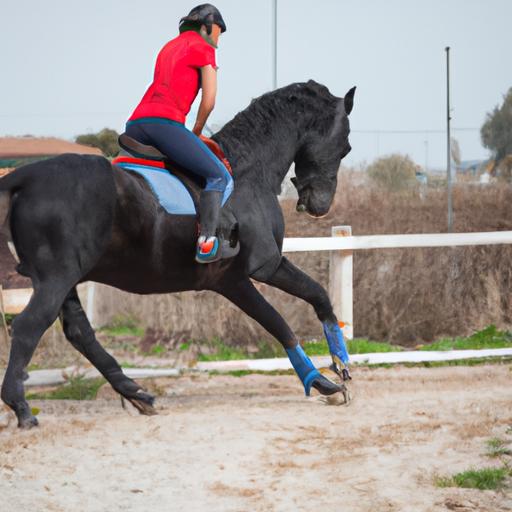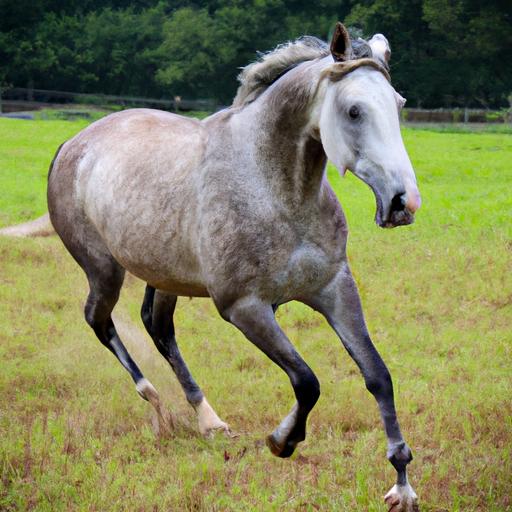Unlock your horse’s full potential with horse heart rate training zones. Enhance performance, endurance, and overall fitness for peak athletic abilities.
Introduction to Horse Heart Rate Training Zones
As equestrians, we constantly strive to optimize our horses’ performance, endurance, and overall well-being. One key aspect that often goes unnoticed is heart rate training. Just like humans, horses have heart rate training zones that can be utilized to enhance their fitness levels and maximize their potential. In this article, we will delve into the significance of horse heart rate training and explore the concept of heart rate training zones.
Understanding the significance of heart rate training for horses
Have you ever wondered how professional riders and trainers manage to push their horses to achieve extraordinary feats? The secret lies in heart rate training. By monitoring and manipulating their heart rates during workouts, we can effectively enhance their cardiovascular health, stamina, and overall athletic performance. Horse heart rate training zones serve as a roadmap to guide us in tailoring our training sessions to meet specific goals.
Explaining the concept of heart rate training zones
Similar to humans, horses have distinct heart rate training zones that determine the intensity of their workouts. These zones are determined by their individual maximum heart rate and serve as benchmarks for different types of training. Each zone offers unique benefits and targets specific physiological adaptations. By understanding these zones, we can strategically plan our training sessions, ensuring we optimize our horses’ progress while minimizing the risk of overexertion or injury.
In the upcoming sections, we will explore the various heart rate training zones for horses and the corresponding training strategies. Get ready to unlock the true potential of your equine partner as we dive into the world of horse heart rate training zones.
Unleashing the Benefits of Heart Rate Training

Benefits of Heart Rate Training for Horses
When it comes to optimizing our horses’ performance and overall well-being, heart rate training proves to be a game-changer. By incorporating heart rate training into our equine fitness routines, we can unlock a multitude of benefits that propel our horses to new heights.
Improved cardiovascular health and endurance
Just like humans, horses can greatly benefit from cardiovascular conditioning. Heart rate training stimulates the heart muscles, improving their efficiency and endurance. As we gradually increase the intensity of workouts within the appropriate heart rate zones, we push their cardiovascular systems to adapt, resulting in increased blood flow, oxygen delivery, and overall cardiovascular health.
Enhanced performance and athletic abilities
Do you dream of achieving peak performance with your equine partner? Heart rate training is the key. By working within specific heart rate training zones, we can target the physiological adaptations necessary for peak athletic performance. Through systematic training, our horses develop increased strength, power, and speed, allowing them to excel in their chosen discipline.
Prevention of overexertion and potential injuries
One of the greatest advantages of heart rate training is its ability to prevent overexertion and potential injuries in horses. By monitoring their heart rates, we can ensure that our equine companions are working at an appropriate intensity level, avoiding physical strain and fatigue. This proactive approach to training minimizes the risk of injuries, allowing our horses to train consistently and safely.
Embrace the power of heart rate training and witness the transformation in your equine partner. In the upcoming sections, we will dive deeper into the world of horse heart rate training zones, exploring the different training zones and strategies to help you unleash the full potential of your horse.
Determining Horse Heart Rate Training Zones

Methods for measuring horse heart rate
Measuring a horse’s heart rate is essential to determine their training zones accurately. Fortunately, there are several reliable methods available to monitor their heart rate during exercise. One common approach is using a heart rate monitor, which can be attached to the horse’s girth or halter. These monitors utilize sensors to detect the heart rate and provide real-time data, allowing you to make informed decisions during training sessions.
Another method is the manual palpation technique, where you can feel the horse’s pulse by placing your fingers on specific arteries. The most commonly used artery for palpation is the facial artery, located under the jawbone. This method requires practice and expertise to ensure accurate readings.
Factors influencing heart rate in horses
Several factors can influence a horse’s heart rate during exercise. Understanding these factors is crucial in interpreting and adjusting their training zones effectively. Some key factors include:
Fitness Level
A well-conditioned horse will typically have a lower resting heart rate and reach higher heart rates during intense exercise compared to a less fit horse. Gradually building fitness levels over time will result in improved cardiovascular capacity and lower resting heart rates.
Age and Breed
Younger horses and certain breeds may have naturally higher heart rates due to their metabolism and physiological differences. It’s important to consider these factors when determining training zones, as they may require slightly different approaches.
Environmental Conditions
Temperature, humidity, and altitude can all impact a horse’s heart rate. Hot and humid conditions, as well as high altitudes, can cause an increase in heart rate during exercise, while cold temperatures may lead to slight decreases.
Calculating individual horse heart rate training zones
To calculate individual horse heart rate training zones, it is essential to establish the horse’s maximum heart rate (MHR). One common method is to subtract the horse’s age from 220. However, it is important to note that this is a general estimation, and individual variations can occur. Working with a veterinarian or equine fitness professional can provide more accurate methods to determine the horse’s MHR and subsequent training zones.
Determining the horse’s heart rate training zones allows you to tailor workouts to specific intensity levels. In the next section, we will explore the different training zones for horses and the benefits they offer. Let’s continue our journey towards unlocking your horse’s full potential.
Different Training Zones for Horses

When it comes to horse heart rate training, understanding the different training zones is crucial. Each zone offers unique benefits and targets specific physiological adaptations. Let’s explore the four main training zones for horses and discover how to optimize training in each zone.
A. Zone 1: Resting and Recovery Zone
In Zone 1, we enter the realm of resting and recovery. This zone represents the lowest intensity level, where the horse’s heart rate is at its lowest, typically between 40-50% of their maximum heart rate. Training in this zone helps promote relaxation, recovery, and the development of an aerobic base. It plays a vital role in maintaining overall fitness and conditioning, especially during rest days or active recovery sessions.
B. Zone 2: Fat Burning and Aerobic Conditioning Zone
Zone 2 is where the magic of fat burning and aerobic conditioning happens. Here, the horse’s heart rate ranges between 50-60% of their maximum heart rate. Training in this zone encourages the body to utilize fat as a primary energy source, improving endurance and stamina. Long, steady workouts at a moderate pace are ideal for maximizing fat burning and developing a solid aerobic foundation.
C. Zone 3: Anaerobic Threshold Training Zone
Zone 3 is all about pushing the limits and improving the anaerobic threshold. In this zone, the horse’s heart rate hovers between 60-75% of their maximum heart rate. Training in Zone 3 helps increase the horse’s lactate threshold, enabling them to sustain higher intensities for longer periods. Intervals and tempo workouts play a significant role in Zone 3 training, allowing horses to develop the ability to perform at higher intensities without accumulating excessive fatigue.
D. Zone 4: High-Intensity Interval Training Zone
Welcome to the realm of peak performance and explosive power. Zone 4 represents high-intensity interval training, where the horse’s heart rate reaches 75-90% of their maximum heart rate. Training in this zone focuses on short bursts of intense effort followed by periods of active recovery. It helps improve speed, power, and anaerobic capacity. Incorporating interval workouts and sprints into your training regimen can significantly enhance your horse’s performance in competitive disciplines.
By understanding and utilizing these different training zones, you can create a well-rounded training program that targets specific goals and optimizes your horse’s performance. In the next section, we will delve deeper into the training strategies for each heart rate zone, uncovering the secrets to unlocking your horse’s full potential.
Training Strategies for Each Heart Rate Zone
Zone 1 Training Techniques and Exercises
In the world of horse heart rate training zones, Zone 1 is synonymous with resting and recovery. This zone plays a crucial role in maintaining your horse’s overall well-being and facilitating their recovery after intense workouts. Here, the aim is to keep their heart rate at a low and steady pace, promoting relaxation and rejuvenation. Gentle hacks, leisurely walks, or light trotting sessions are ideal activities for Zone 1 training. Remember, the key is to allow your horse to recover and recharge in this zone.
Zone 2 Training Strategies for Optimal Fat Burning
Zone 2 is where the magic happens when it comes to burning fat and improving aerobic conditioning. This zone lies between the lower and upper limits of your horse’s aerobic capacity, allowing them to build endurance and stamina. Engaging in steady, prolonged exercises like long trots or canters will push their heart rate to the upper end of Zone 2, facilitating fat utilization for energy. By incorporating interval training within this zone, alternating between steady-state and slightly higher intensities, you can further enhance their fat-burning potential.
Zone 3 Workouts to Improve Anaerobic Threshold
Zone 3, often referred to as the anaerobic threshold training zone, is where your horse’s cardiovascular system is put to the test. This zone lies just below their maximum heart rate and primarily focuses on improving their anaerobic capacity. Interval training becomes the key strategy in Zone 3, with short bursts of high-intensity exercises followed by brief recovery periods. This type of training helps horses develop the ability to sustain a higher level of intensity for longer durations, vital for disciplines that demand short bursts of speed and agility.
Incorporating High-Intensity Intervals in Zone 4 Training
Zone 4, the highest intensity training zone, is reserved for short, intense bursts of activity. This zone targets the development of explosive power and speed. Incorporating high-intensity intervals, such as sprints or jumping exercises, challenges your horse’s cardiovascular system and muscular strength. However, it is crucial to approach Zone 4 training with caution, as overexertion can lead to fatigue or injury. Always remember to gradually introduce and build up the intensity in this zone, ensuring your horse is adequately prepared for the demands it places on their body.
By understanding the specific training strategies for each heart rate zone, you can tailor your workouts to meet your horse’s individual needs and goals. Let’s explore the art of monitoring and adapting these training zones in the next section, so we can fine-tune our approach and optimize our equine partner’s performance.


